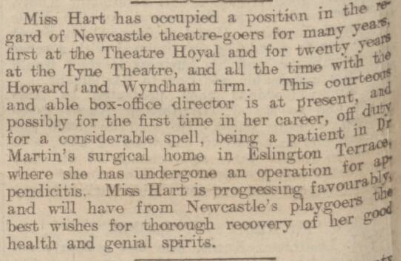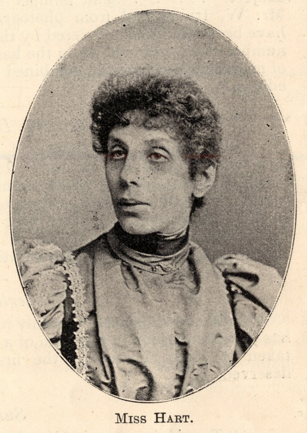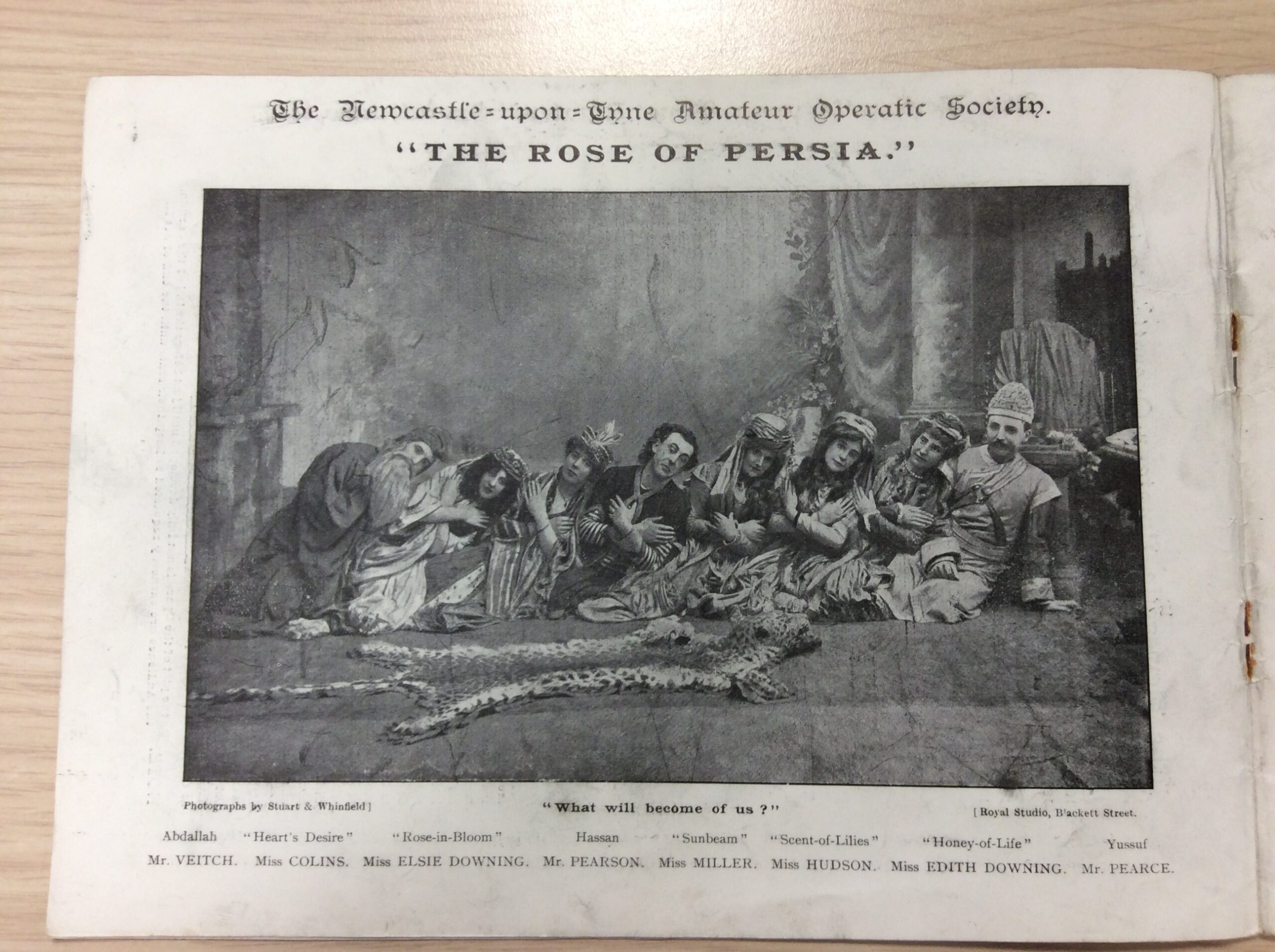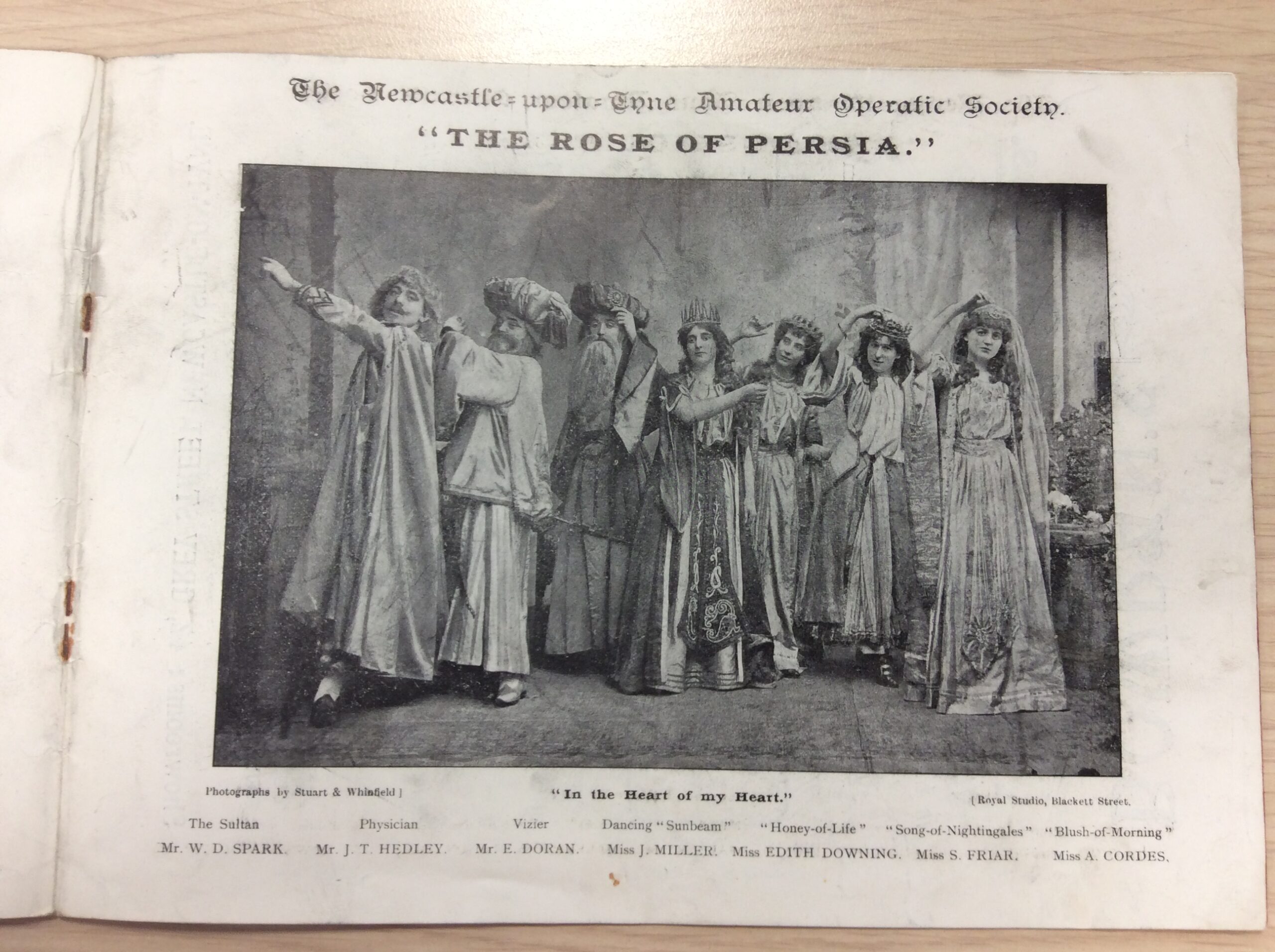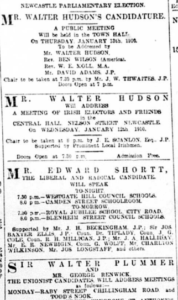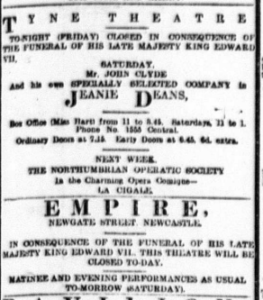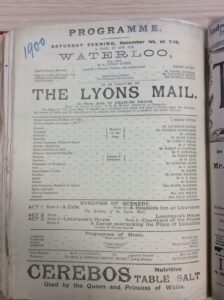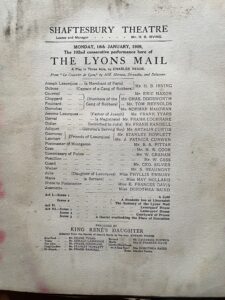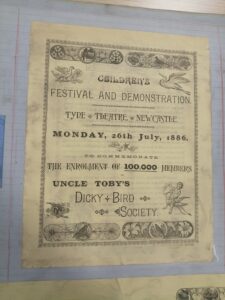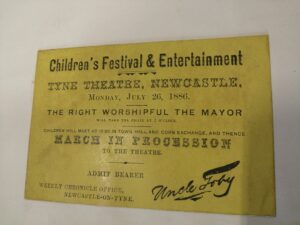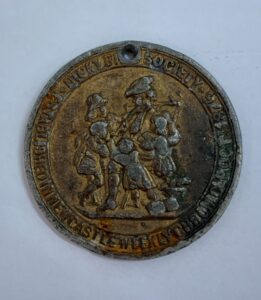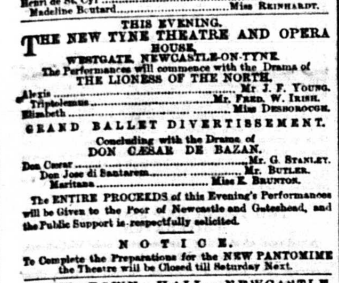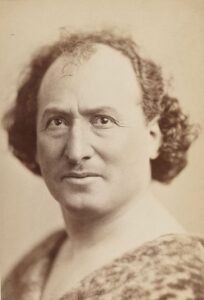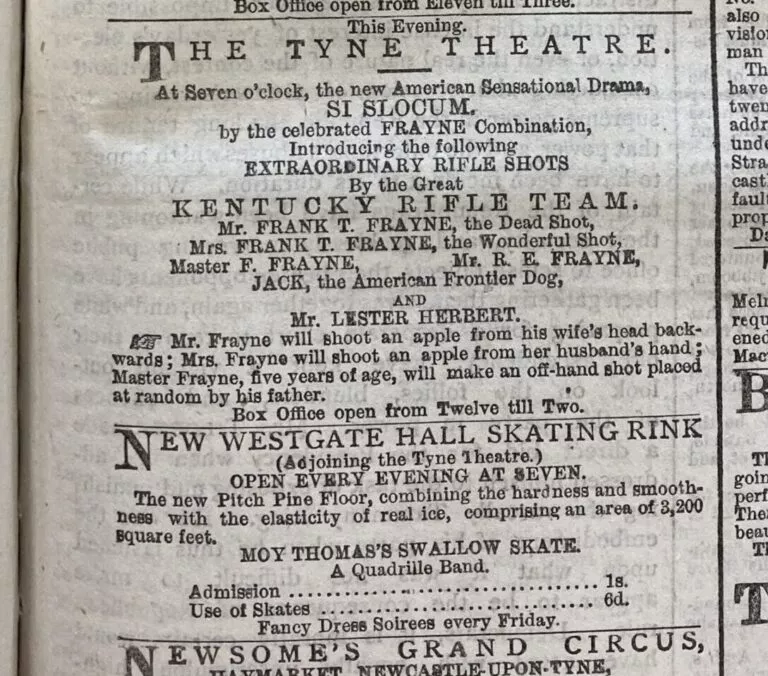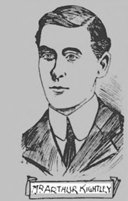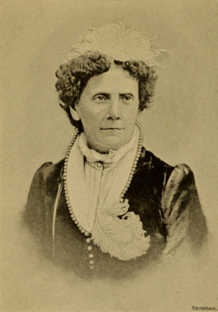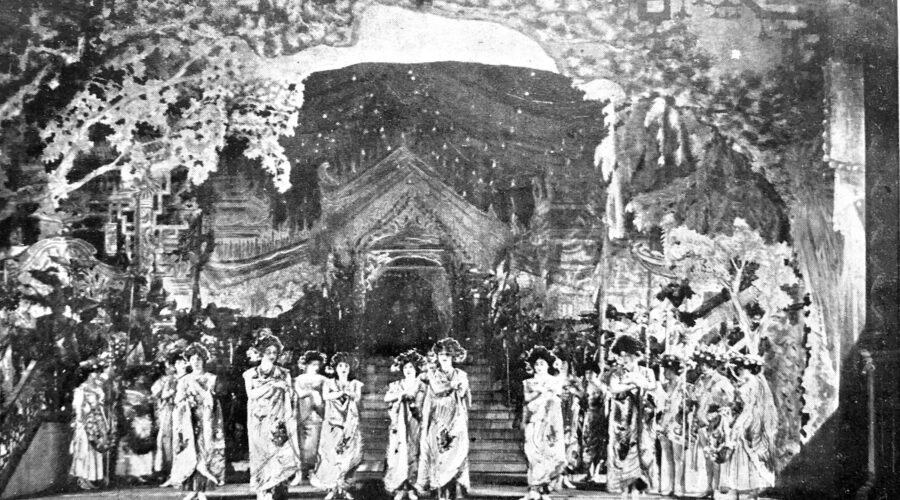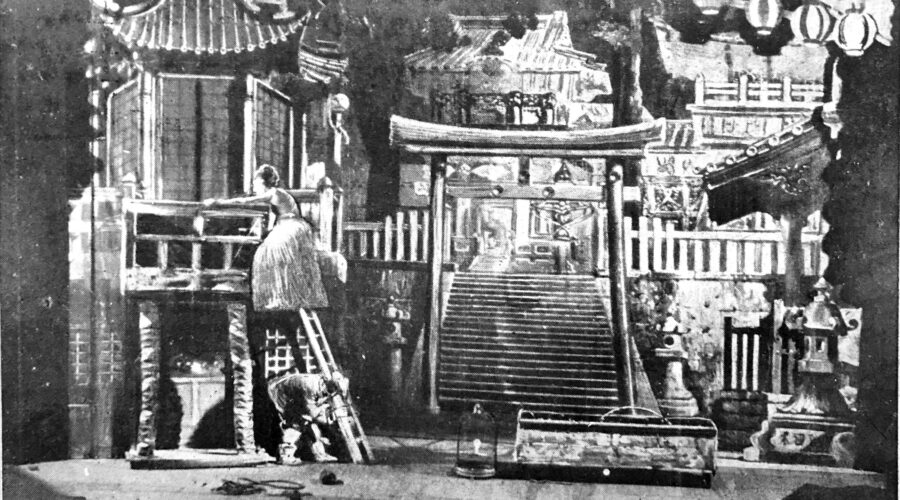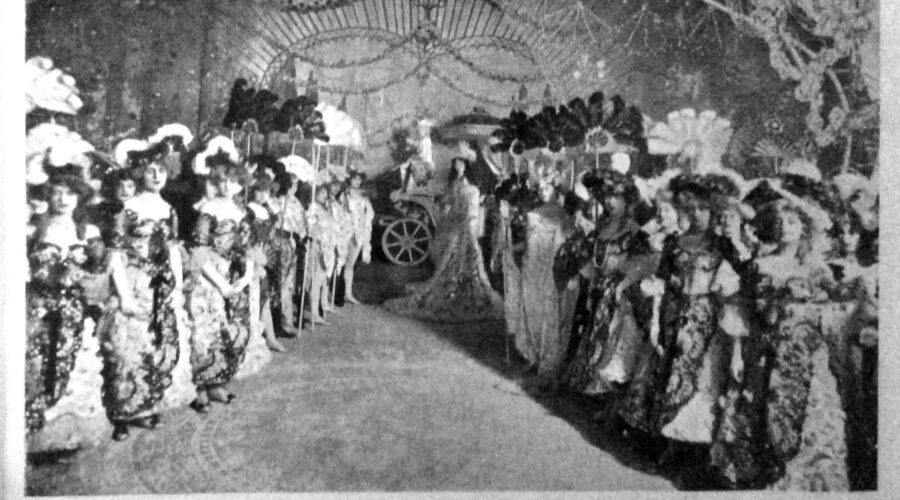But then when the theatrical season started again on 11 September 1876 (imagine the woodwork in early September!), the demand amongst the people of Westgate for a rink seems to have persisted, and so one T. Potts, the manager of the Boar’s Head pub, which adjoined the Tyne Theatre, converted one of its rooms into the New Westgate Hall Skating Rink, which opened on 30 October 1876 (open 1-4pm and 7-10pm, admission 1s, skate-hire sixpence, with live musical accompaniment plus fancy-dress soirees every Friday (because why mess with a perfect formula?), and with floors of pitch pine, “acknowledged to be the best known material for skating purposes, and combining the smoothness and hardness of real ice with an elasticity which is found wanting in ordinary asphalte floors”, as its advertisements in the Daily Chronicle announced).
Fads come and go, of course, and so on 18 December 1876 this neighbouring venue became the Westgate Hall of Varieties, with standard music-hall turns, including comic songs and sketches. Thus a theatre and a music hall were now suddenly crammed up against each other like passengers on the Tube.
The Westgate Hall of Varieties operated for about five years, and in c.1882, the Boar’s Head (now the Tyne Vaults Inn) and its Hall were both absorbed by the Tyne Theatre (address now, as a result, 111 and 113 Westgate Road). In July 1883 the Newcastle Journal noted that the renovations at the Tyne Theatre included turning the gallery of this disused space into a “gentleman’s cloak room” and the ground floor into a refreshment room, in which, the journalist added, smoking would be permitted, something that prompted the owner, Joseph Cowen junior, to dash off worried letters to the then manager R.W. Younge and his own solicitor, letters that have survived in Tyne & Wear Archives. Just under a decade later, in late 1892, the room was again refurbished as the Grand Salon, a second and more intimate performance space for the venue, which operated for over 20 years.
When the Tyne Theatre closed in 1919 and was converted into the Stoll Picture Theatre, the room became a luxurious tea room (trust me – photos survive in the City Library), and then when the venue became the Tyne Theatre again, the room was refurbished yet again to become the current Bistro Bar.
Dr Andrew Shail, Senior Lecturer in Film & Chair of Board of Studies for Media, Culture & Heritage, Newcastle University


